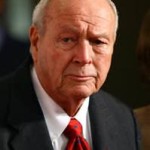What’s wrong with municipal golf courses in Utah that wouldn’t be solved by moving them into special services districts?
Ho-hum, another year, another budget and the proverbial soup can that is municipal golf course operations in Salt Lake City got kicked down the road again. When will elected officials finally acknowledge their business model for golf is not only flawed but outdated as well?
As a PGA Master Golf Professional with forty-five years’ experience managing and administering municipal golf course operations, I believe, unequivocally, that government should not be in the golf business. The only valid reason to build a golf course, according to the National Golf Foundation, is to sell building lots as an amenity adding value to home sales. Once the lots are sold and houses built, the golf course becomes part of the home owner’s equity. The golf course belongs to the homeowners to do with what they want. Sell, manage or privatize the choice is theirs. Why then do municipal governments in Utah continue to build, maintain and operate golf courses as a business? The answer, of course, is related to our pioneer heritage and historical self-reliance.
Six months after Brigham Young led the migration into the greater Salt Lake Valley and the winter snows had cleared, he sent his envoys throughout the region to explore and colonize potential settlements. The first thing those hardy pioneers did, when they became established, was build a church, a cemetery and then a park in that order where the community could worship, mourn, recreate and gather socially. When golf was introduced in the early part of the 20th century with the likes of Bobby Jones, Gene Sarazen, and locally, George Von Elm, it was only natural for the community to add a golf course, usually designed and hand built by the local population which partially explains all the quirky, idiosyncratic, little nine-hole golf courses located throughout the state. They were created not as business entities but as an extension of the park for the residents to use and enjoy. Maintenance was secondary, programs non-existent, and the golf pro, usually a local who played the game, managed the course with whatever funds were available, usually a small green fee. He was paid a salary and whatever he did on the side, (i.e., lessons, club repair, etc.), he got to keep. It was not a commercial business enterprise, it was a service for the public’s use which partially explains why Utah annually leads the nation in municipal golf course participation per capita.
Where did this altruistic concept go wrong? How did cities, counties and state government end up building, operating and managing multi-million-dollar properties? When did the notion of golf, as a business, become a cash cow for those municipalities? Well, like most things of this era, blame it on the Baby Boomers.

It started in the 1950’s: GI’s returning from World War II suburbanized America, a popular president, Dwight Eisenhower, played golf and national TV brought us Arnold Palmer in all his swashbuckling glory. Golf became a sport of the masses, and the public clamored for better facilities, more programs and golf courses that looked like they watched the pros play on television. Municipalities rushed to keep up, bonding to build, expand, and improve their golf courses. The boom continued with bigger clubhouses, driving ranges, carts, restaurants, and pro-shops with all the latest equipment and merchandise. Municipalities became fully engaged in the golf business, and there was no turning back. Parks Departments looked on golf as their golden ticket to fund other recreation programs and facilities.
The problem was, the public looked at golf as an elitist sport and insisted that golfers pay for their right to play and utilize those courses, including maintenance, capital improvements, and bond payments. Based on citizen’s complaints and concerns, municipalities established individual, independent accounts, designated as enterprise funds or golf accounts, separate from the general fund and all revenues generated at golf courses went into these funds. These funds were then directly targeted to pay for golf operations. The non-golfing public wanted no part in supporting golfer’s addictions, especially when tax dollars were at stake.
But like all booms, it was inevitable that public golf was destined for change, and when golf participation slowed in the late 90’s, the easy way for city and county councils to balance golf funds was to defer maintenance and capital improvements. As the deficits piled up, public golf became an unsustainable business model which municipal governments were loath to address. Raising fees, refinancing bonds, and slashing capital improvements were all discussed, but drastic changes to golf’s business model needed to occur and, like most big adjustments in the public sector; these changes were finally launched with a lawsuit from dissatisfied citizens.
In the mid-80’s, Golf Pro’s, employed by the municipality, were also working as concessionaires. That side stuff golf pros were tossed in the early beginning of the golf cycle, the stuff government did not want: (e.g., merchandise, lessons, carts, range et al.), were starting to bring in big bucks. This revenue, coupled with the municipalities increased compensation and benefits to the pros, was gaining attention from outsiders and city officials. The dilemma for pros was this arrangement, (i.e., being a concessionaire and working as an employee), was against the law and violated the Utah Code. After the courts held golf pros broke the law, municipalities, facing multiple lawsuits from all sides, were now scrambling to bring their golf business models into compliance with the ordinances.
 On a personal note during this time and with full disclosure, I was serving as the Head Golf Professional at Nibley Park Golf Course. I was also in graduate school at the University of Utah in Political Science and was Chairman of the East County Recreation District which gave me a seat at the table of the Salt Lake County’s Golf Advisory Board, privy to the internal discussions on what Salt Lake County should do with their golf courses. As part of my school work, I was writing position papers on municipal golf and researching my Master’s Thesis at the same time. Golf was changing, and I was right, smack dab, in the middle of it. Not only was I participating in the discussions, but I was also one of the golf pros those decisions might affect. Some would consider this a conflict of interest, and maybe they would be right, but in those days Salt Lake City, where I was employed was, for better or worse, in direct competition with the Salt Lake County, so in my mind and others, the conflict was at arm’s length. Circumstances eventually changed, and little could I know I would end up working for Salt Lake County Golf for over 20 years under this very system I had a part in creating?
On a personal note during this time and with full disclosure, I was serving as the Head Golf Professional at Nibley Park Golf Course. I was also in graduate school at the University of Utah in Political Science and was Chairman of the East County Recreation District which gave me a seat at the table of the Salt Lake County’s Golf Advisory Board, privy to the internal discussions on what Salt Lake County should do with their golf courses. As part of my school work, I was writing position papers on municipal golf and researching my Master’s Thesis at the same time. Golf was changing, and I was right, smack dab, in the middle of it. Not only was I participating in the discussions, but I was also one of the golf pros those decisions might affect. Some would consider this a conflict of interest, and maybe they would be right, but in those days Salt Lake City, where I was employed was, for better or worse, in direct competition with the Salt Lake County, so in my mind and others, the conflict was at arm’s length. Circumstances eventually changed, and little could I know I would end up working for Salt Lake County Golf for over 20 years under this very system I had a part in creating?
It was during this turbulent period, based on opinions of the County Attorney, which stated the County would be forced to alter their business model if they were to continue in the golf business, that the County’s Advisory Board considered four business models for golf. They were:
(1) Privatization/Long Term Lease;
(2) General Manager/County Merit Employee;
(3) Independent Contractor “County Owns All Equipment” and
(4) Independent Contractor “Professional Owns All Equipment”
(For a full description of each of these business models, please consult my Master’s Thesis at: www.Jeffgolfguy.com/Master’s Thesis/ “A RESEARCH STUDY TO DETERMINE THE ROLE OF PGA CERTIFIED GOLF PROFESSIONALS IN A MUNICIPAL GOLF COURSE SETTING”)
After lengthy discussions, the County selected the merit employee model which stated in part:
“The County would have full control of the manager’s job performance. There would be in-creased revenue due to the municipality owning all the driving range and rental equipment. And, there would be no conflicts of interest when using this management method.
Advantages of this system included the following: Changing to this management model would be a smooth transition for the County because it would utilize a manager that is much like a recreation center director. Through controlling the operation, quality of the manager’s job performance could be monitored with regular evaluations. County revenues would increase; the enterprise fund would grow at a greater rate. No conflicts of interest. County would have complete ownership of all equipment, thus allowing the County greater revenue generation.
Disadvantages included the following: The County would have to purchase all the equipment and merchandise. The County would have to maintain said equipment and merchandise. The report also indicated there were very few incentives for the manager to bring golfers on to the course. Golf Pros would now be employees and municipalities were the employers in full charge of operating the golf business.”
In spite of perceived negatives with this model, and after Salt Lake County revamped their entire golf system and implemented these changes, most of the municipal golf courses in the state quickly fell in line and applied the same business model. Golf Pros were now fulltime employees with little or no input and municipal governments soon ran the show.
The problem was, of course, City and County Councils had mandated golf courses be self-sufficient, (i.e., revenues must match expenses.) In most cases, public golf courses do this. They do make money if you account for operating costs. The budgetary problems, for cities and towns caught up in the golf boom, have always been deferred maintenance, capital improvements, and bond payments. These problems continue to be the elephant in the room, and municipal governments have been loath to address them. Much of municipal golf’s problems are based, in my opinion, on the age-old dilemma of government inefficiencies,( e.g., administrative controls, mismanagement, elected politicians reluctance to raise taxes, change their business model and admit to the public they could be wrong.)
Based on these premises, it was just a matter of time until municipal governments, either got out of the golf course business altogether by privatizing them or, in Salt Lake City’s case, start closing golf courses based on shrinking revenues and mounting costs.
Where does the problem end? It’s a simple fact if you close golf courses they won’t be re-opened. Even a cursory analysis of generational studies indicates Baby Boomers play golf, their kids (Generation Xer’s) don’t, but their kids (Millenniums) are embracing the sport and participation is rising along with revenues.
National Golf Foundation statistics bear this out. According to the NGF:
“in 2015 golfers under the age of 18 playing the game was up 20% or 3 million more kids playing golf than in 2010; people who tried golf for the first time in 2015 was pegged at 2.2 million, the most since 2002; women who play golf was approximate 5.8 million, an all-time high; non-golfers interested in learning how to play was estimated at 37 million; and finally, rounds played in 2015 totaled 455 million, up 1.4% from 2014.”
Based on these figures and projections, participation, revenue, and rounds played at municipal golf courses should see steady increases for the next generation. How to manage those increases is the dilemma municipalities face going forward. Do they continue with the same business model, hoping the hybrid system of using the golf fund to operate their golf courses, the Capital Improvement Program budget (CIP) to fund maintenance and improvements, while praying that revenue will increase substantially enough to cover past budget shortfalls? The probability of this happening is akin to winning the lottery.
Why then do city officials not consider moving golf courses into a special service district?
Special Districts were first implemented in the 18th century especially targeted towards park districts and have been part of the Utah Code since 1975. Services once provided by cities are increasingly being managed and directed by Special Districts, and that model is already operating in Salt Lake County with police, fire, sanitation, and now municipal services, all moving to Special Districts. Golf, in my opinion, should be next.
The leading revenue centers in golf, according to the National Golf Association, are, in order of the amount of revenue generated:
- Green Fees
- Carts
- Food & Beverage
- Merchandise
- Driving Ranges/Teaching Facilities
- Player Development Programs, (i.e. leagues, junior golf, tournaments, etc.
Municipalities, based on their current business model, have never wholly managed these revenues to their full potential. For example, golf merchandise is subordinated to the golf course level. Golf pros are given a budget to buy merchandise, market it and sell it. Some do a good job, others not so good. If they make mistakes, then that merchandise sits on the shelves and gathers dust. Sales, deep discounts, and promotions are discouraged. Most municipal golf course pro-shops rely on their leagues and tournaments to market and sell their merchandise, often at much higher prices than off-course retailers. This same rationale applies to food and beverage, which, to the best of my knowledge, every golf course in Salt Lake City and Salt Lake County contracts out to independent vendors.
Do you wonder, like I do, why golfers, on their way to their local golf course, stop at Golf Galaxy, Dicks Sporting Goods or Uinta Golf to buy golf balls, clubs, and other merchandise? Or go out of their way to visit the corner 7-11, Maverick or McDonalds for their food and beverages before they head to the course? This is just plain silly in both cases. Why would any successful business giveaway money when, if managed correctly, the aforementioned revenue producers could yield much more to the bottom line?
Under Special Service District guidelines, established by an independent Board of Directors, golf courses, rather than the semi-independent outlets as they now exist; would function as a chain, much like other successful retailers. Centralized management and purchasing would eliminate the middle man and economies of scale would factor in. The district would still employ PGA golf professionals, and they would have an impact on decisions made, but those decisions would be centralized to benefit the whole enterprise.
The current model, as it now exists, is fragmented between operations, management, merchandise, maintenance, capital improvements, food and beverage and player development programs. No master plan and no central administration is controlling the total operation. Under the current model; the course superintendent can shut down the course, the café can close early, and shop staff can restrict carts and range with no clear guidelines on how those decisions will affect management’s long-term goals. How frustrating is it for customers to show at the golf course and you can’t buy a drink or hit range balls because of an arbitrary decision made by this fragmented management model?
Under the Special Services District model, Golf Professionals would perform like a general manager and manage the entire enterprise with clear guidelines from the district. The benefits of belonging to a District are apparent: economies of scale, centralized management, the ability to bond and tax, and most of all, preserve golf courses the citizens of this valley have built, paid for and enjoyed for almost 100 years.
The proverbial can has been kicked down the road way too long; it’s time for Salt Lake City and Salt Lake County to get out of the golf business and move their golf courses into a Special Service District.
Jeff Waters is a PGA Master Professional and a member of the Golf Writers Association of America



